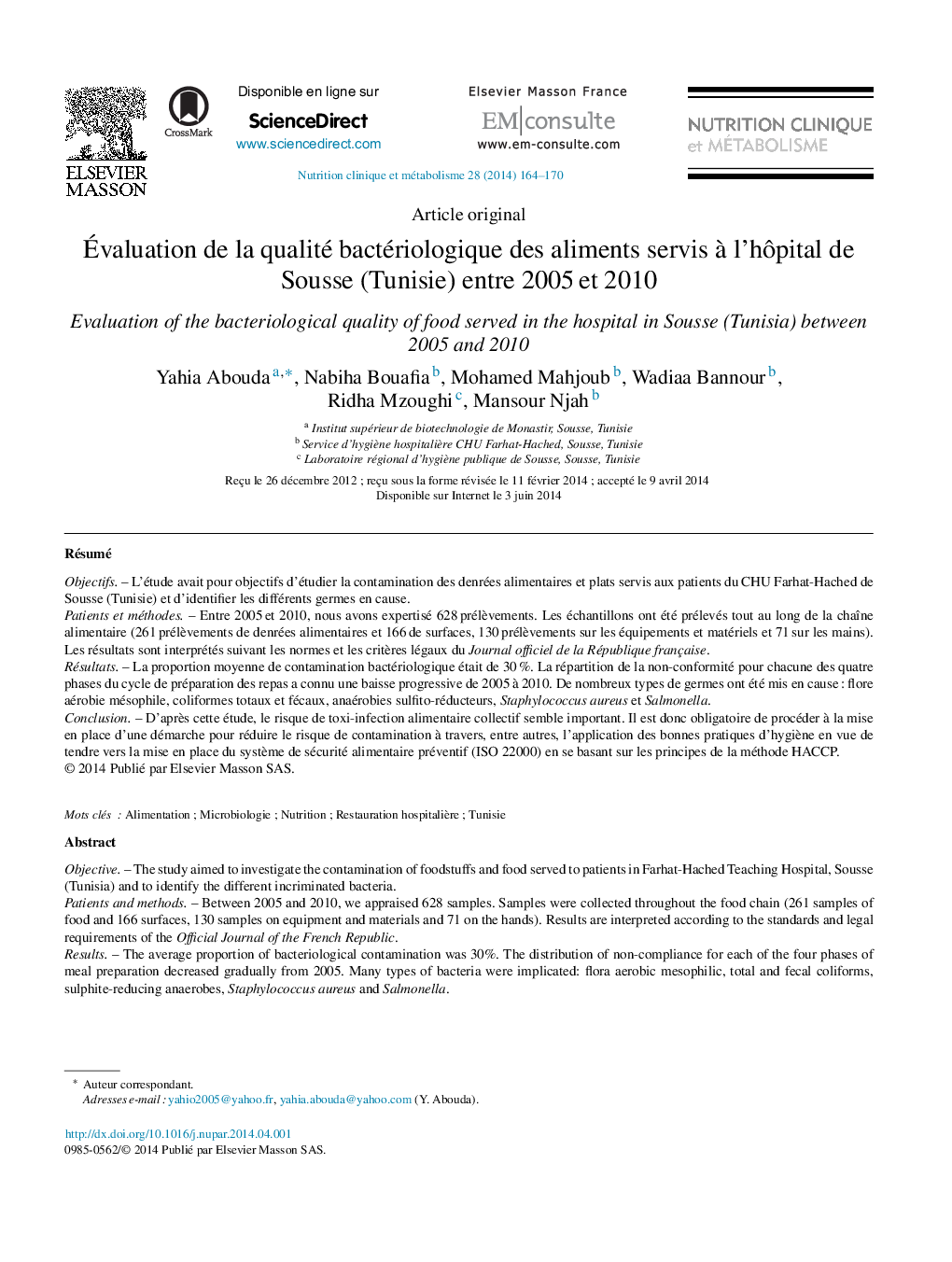| Article ID | Journal | Published Year | Pages | File Type |
|---|---|---|---|---|
| 2692831 | Nutrition Clinique et Métabolisme | 2014 | 7 Pages |
RésuméObjectifsL’étude avait pour objectifs d’étudier la contamination des denrées alimentaires et plats servis aux patients du CHU Farhat-Hached de Sousse (Tunisie) et d’identifier les différents germes en cause.Patients et méthodesEntre 2005 et 2010, nous avons expertisé 628 prélèvements. Les échantillons ont été prélevés tout au long de la chaîne alimentaire (261 prélèvements de denrées alimentaires et 166 de surfaces, 130 prélèvements sur les équipements et matériels et 71 sur les mains). Les résultats sont interprétés suivant les normes et les critères légaux du Journal officiel de la République française.RésultatsLa proportion moyenne de contamination bactériologique était de 30 %. La répartition de la non-conformité pour chacune des quatre phases du cycle de préparation des repas a connu une baisse progressive de 2005 à 2010. De nombreux types de germes ont été mis en cause : flore aérobie mésophile, coliformes totaux et fécaux, anaérobies sulfito-réducteurs, Staphylococcus aureus et Salmonella.ConclusionD’après cette étude, le risque de toxi-infection alimentaire collectif semble important. Il est donc obligatoire de procéder à la mise en place d’une démarche pour réduire le risque de contamination à travers, entre autres, l’application des bonnes pratiques d’hygiène en vue de tendre vers la mise en place du système de sécurité alimentaire préventif (ISO 22000) en se basant sur les principes de la méthode HACCP.
ObjectiveThe study aimed to investigate the contamination of foodstuffs and food served to patients in Farhat-Hached Teaching Hospital, Sousse (Tunisia) and to identify the different incriminated bacteria.Patients and methodsBetween 2005 and 2010, we appraised 628 samples. Samples were collected throughout the food chain (261 samples of food and 166 surfaces, 130 samples on equipment and materials and 71 on the hands). Results are interpreted according to the standards and legal requirements of the Official Journal of the French Republic.ResultsThe average proportion of bacteriological contamination was 30%. The distribution of non-compliance for each of the four phases of meal preparation decreased gradually from 2005. Many types of bacteria were implicated: flora aerobic mesophilic, total and fecal coliforms, sulphite-reducing anaerobes, Staphylococcus aureus and Salmonella.ConclusionAccording to this study, the risk of foodborne collective illness seems intense. It is therefore mandatory to proceed with the implementation of an approach to reduce the risk of contamination through, inter-alia, the application of good hygiene practices to work towards the implementation of the food safety system preventive (ISO 22000) based on the principles of HACCP.
